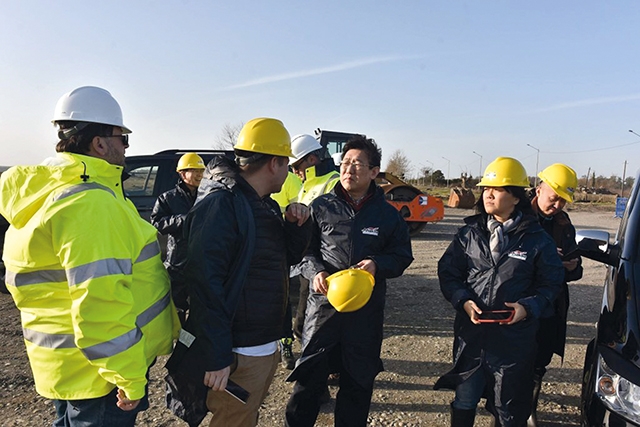The Ripple Effects of US-China Competition in the South Caucasus
Op-ed
Among the many unintended effects the coronavirus might have on world politics is the trend toward unifying American political and business elites against China. To be sure, the process was already in place well before the spread of the pandemic. It could even be argued that the process set in before the rise of Donald Trump, when under Barack Obama America was gradually shifting its geopolitical attention from the Middle East to China and South-East Asia. Both the Obama and Trump administrations contributed to this shift, but there was no conclusive accord within the American political elite on what kind of threat China posed to the US geopolitical interests.
Still, the US’ deep economic interconnectedness with China has complicated reaching a policy consensus on China. In many ways, the coronavirus, though it hit the US more gravely than any other country in the world, is likely to serve as a defining moment for America’s foreign policy in the 2020s-2030s. The US political elite will become not only more China-focused, but the competition with Beijing will become more pronounced. It is likely that major attempts from the US side will be made to produce a definitive approach for dealing with China. This will involve reinvigorating the US military presence among its allies across the Indo-Pacific region. India, Japan and South Korea will play a larger role in Washington’s calculus.
The Indo-Pacific may well be a centerpiece of the US’ foreign policy, but the ripple effects, if there is increased competition between the two powers, will be felt all across the globe. The South Caucasus, due to its location between the eastern Europe and the Caspian-Central Asia regions, would likely be a piece in the US-China struggle. Naturally, the level of competition will not be as intensive as elsewhere: the relative poverty of the region, small resources as well as geographic location, would have a limiting effect. Nevertheless, China is interested in the Black Sea and this is where the role of Georgia’s location plays an important role.
Poti, Batumi and potentially the deep sea port in Anaklia draw Beijing’s attention. This was seen in the visit of a large Chinese delegation mid-2019 amid the crisis surrounding the Anaklia port. The business engagement in Anaklia could give the Chinese big opportunities like what the country has been doing in other regions of the world, in the construction of ports etc.
Additionally, a number of vital interregional projects traverse Georgian territory, which adds further weight to the country’s location. For China, one of the geopolitical aims is to find short and safe land routes from Xinjiang (the westernmost region of modern China) to the European market. The Russian corridor is suitable and geographically effective as no seas and mountains are to be traversed. However, Beijing is interested in other routes too and the South Caucasus corridor is interesting as it is the shortest line from China to Europe. This is how the Baku-Tbilisi-Kars railway, unveiled in 2017 and connecting Azerbaijan through the Georgian territory with Turkey, gains Eurasian importance.
Thus, for the US, as differences with China grow, one of the imperatives in the South Caucasus region will be to block Beijing’s geopolitical initiatives. This could involve larger disbursement of finances to uphold Georgia’s economic and infrastructure development. Another way could be a powerful military component. Larger military drills between Georgian and the US/NATO. Technological support is also likely as Washington is keen to limit the spread of China’s 5G. Georgia, and the South Caucasus overall, thus could find itself in the midst of the Eurasian techno-economic struggle unfolding between China and the US.
By Emil Avdaliani
Image Source: 1TV.ge












